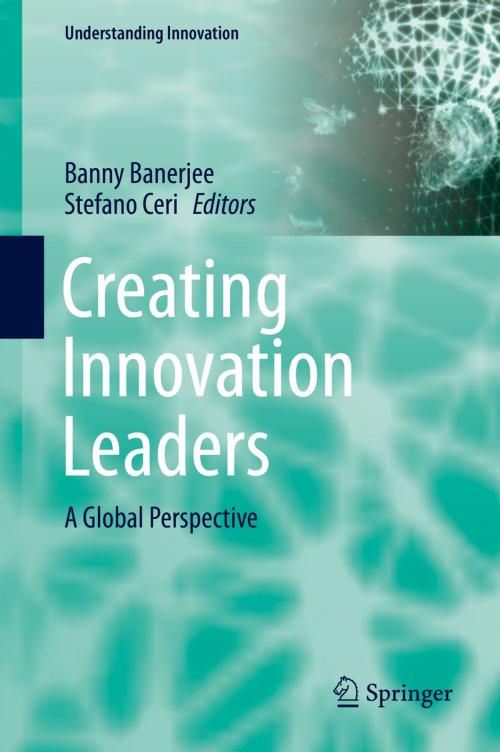Creating Innovation Leaders
A Global Perspective
Nonfiction, Reference & Language, Education & Teaching, Educational Theory, Curricula, Business & Finance, Management & Leadership, Production & Operations Management| Author: | ISBN: | 9783319205205 | |
| Publisher: | Springer International Publishing | Publication: | December 1, 2015 |
| Imprint: | Springer | Language: | English |
| Author: | |
| ISBN: | 9783319205205 |
| Publisher: | Springer International Publishing |
| Publication: | December 1, 2015 |
| Imprint: | Springer |
| Language: | English |
This book focuses on the process of creating and educating innovation leaders through specialized programs, which are offered by leading academic schools. Accordingly, the book is divided into two parts. While the first part provides the theoretical foundations of why and how innovation leaders should be created, the second part presents evidence that these foundations can already be found in the programs of ten top-level universities.
Part one consists of six chapters following a rigorous plan of content development, addressing topics ranging from (1) innovation, to (2) the settings where innovation occurs, (3) innovation leadership, (4) the need to change education, (5) a taxonomy of advanced educational experiences, and (6) cases of positive vs negative innovation leadership in the context of complex problems. Here the authors show that a new kind of innovation leadership is urgently needed, how it can be created, and how it is put into action. The second part is a collection of invited chapters that describe in detail ten leading academic programs: their objectives, curricular organization, enrollment procedures, and impact on students. Selected programs include four North American institutions (Stanford’s d.school, Harvard’s Multidisciplinary Engineering Faculty, Philadelphia University, OCAD’s Master of Design on Strategic Foresight & Innovation), five European institutions (Alta Scuola Politecnica of Milano and Torino, the EIT Master Program, Paris’ d.school, Brighton’s Interdisciplinary Design Program, Aalto University) and the Mission D program at Tongji University in China.
The book is dedicated to all those who recognize the need to provide stimuli regarding innovation and innovation leadership, primarily but not exclusively in academia. These include, but are not limited to, professors, deans and provosts of academic institutions, managers at private organizations and government policy-makers – in short, anyone who
is engaged in promoting innovation within their own organization, and who feels the need to expand the intellectual and practical toolbox they use in this demanding and exciting endeavor.
This book focuses on the process of creating and educating innovation leaders through specialized programs, which are offered by leading academic schools. Accordingly, the book is divided into two parts. While the first part provides the theoretical foundations of why and how innovation leaders should be created, the second part presents evidence that these foundations can already be found in the programs of ten top-level universities.
Part one consists of six chapters following a rigorous plan of content development, addressing topics ranging from (1) innovation, to (2) the settings where innovation occurs, (3) innovation leadership, (4) the need to change education, (5) a taxonomy of advanced educational experiences, and (6) cases of positive vs negative innovation leadership in the context of complex problems. Here the authors show that a new kind of innovation leadership is urgently needed, how it can be created, and how it is put into action. The second part is a collection of invited chapters that describe in detail ten leading academic programs: their objectives, curricular organization, enrollment procedures, and impact on students. Selected programs include four North American institutions (Stanford’s d.school, Harvard’s Multidisciplinary Engineering Faculty, Philadelphia University, OCAD’s Master of Design on Strategic Foresight & Innovation), five European institutions (Alta Scuola Politecnica of Milano and Torino, the EIT Master Program, Paris’ d.school, Brighton’s Interdisciplinary Design Program, Aalto University) and the Mission D program at Tongji University in China.
The book is dedicated to all those who recognize the need to provide stimuli regarding innovation and innovation leadership, primarily but not exclusively in academia. These include, but are not limited to, professors, deans and provosts of academic institutions, managers at private organizations and government policy-makers – in short, anyone who
is engaged in promoting innovation within their own organization, and who feels the need to expand the intellectual and practical toolbox they use in this demanding and exciting endeavor.















